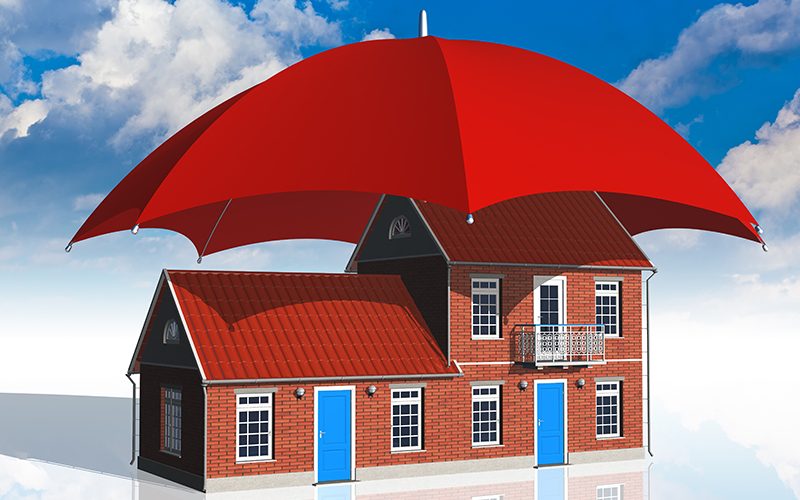
The on-going monsoon can create inconvenience at your home unless you prepare the home to bear with the extending downpours and dull weather conditions.
Good homes can ‘weather the storm’, literally so.
Good homes can withstand all kinds of weather if proper care is taken to handle different weather conditions. As we stand at the mid-way mark in the year, the monsoon season is on, waiting to unleash the downpours over the next 45 days or so. Monsoons in India are a welcome thing, they bring in the much-required rainfall for agriculture growth. But monsoons can also be erratic and troublesome, especially, for crops and homes.
Depending on where you are located the monsoons can be heavy or normal. The monsoon period in India is usually between June and August with some areas receiving rainfall in June while others having it spread across July-August.
Homes can be adversely affected if proper care is not taken during the monsoon period and hence, we have listed a few tips to help prepare your home for the ongoing monsoon season –
Roof inspection: It begins at the top – your roof. The roof of your house can be the most affected section if it is not taken care of properly. Inspect your roof thoroughly and ensure all the cracks and damages are dealt with, immediately. The ridge of your roof is a potential gateway to bursting rains, so, ensure it is repaired and is strong enough to withstand the downpour. For homes that have roof shingles, inspect the shingles and get them repaired. Damaged roofs can create great inconvenience to your stay during heavy downpours.
Clear pipes and drains: Water clogging can result in dampened walls and roofs while facilitating the growth of fungus and moss that are harmful for your living. Dampened walls and roofs can also give way to cracks and further damage if they are not attended to. Clear all the roof drains and rainwater pipes to ensure water is not clogged.
It is also important to work on your gutter; damaged or blocked gutters can accumulate water. Blocked gutters also emit foul odour while acting as breeding grounds for bacteria and other harmful micro-organisms, something you would not want to have.
Coating the exteriors: Double coat the exteriors with waterproofing solutions to ensure there is no seepage of water during the downpours. You could undertake the same practice for all your interior walls and roof – repair the damaged interiors and apply waterproof coating as a backup measure.
Paint the metals: Paint all the metal exteriors which include your gates, railings, door knobs, window grills, etc. to avoid rusting of metal. At the same time, it is good to install shades and awnings over balconies and windows to prevent water from entering your home.
Nets and ventilation: Rains result in a lot of moisture all around your home, which will help breed different species of mosquitoes. Mosquitoes are harmful and can be a major health hazard and hence need to be prevented from moving into your home. Install mosquito nets which provide the dual advantage of preventing mosquitoes from entering inside while facilitating the required ventilation. It is also good to apply mosquito repellent lotions as an extra-care measure.
Basement care: In the case of a basement, inspect it thoroughly to check for cracks in the walls and or leakages. Plug in these leakages and repair the cracks to ensure your basement has the required protection. Also, it is good to install some ventilators to prevent moisture from settling in during the downpour. If the flooring is wooden, make sure you use the right waterproof coating to protect the floor.
Internal precautions: When it comes to the interior of your home, make sure the floor is cleaned with chlorine or vinegar to disinfect the floor and once that is done, do one more cleaning with normal water. Place the wooden furniture few inches away from the windows to avoid spreading of moisture. In case you have wooden shutters, make sure they are waxed or oiled, the shutters can swell by absorbing water from rains. Naphthalene balls are a great addition to your closet and wardrobes, they keep your clothes moisture-free and clean.
Sandbags to rescue: If your home is in the ground floor, consider using the sandbags. Place the sandbags in all the low areas of your home so they can keep the flooding water from moving in. Sandbags can also be used around the planting area in your garden to keep the water from flooding and submerging the plants.
Garden area maintenance: In case you have a garden area, it makes sense to construct cement walkways if you do not have them already. Cement walkways are a great help during the monsoons as they prevent water logging and make it easy to walk. Also, if you have a larger garden area that has trees, it is good to remove the weak branches and clear them off, as branches fall due to heavy rains and litter your garden area.
Monsoon can be a lovely time to witness nature’s beauty and at the same time, heavy downpours can have a devastating effect on your home and the surroundings. Prepping your home for the monsoon season is a great way to ensure a comfortable stay at home while enjoying the season without much hassle.

